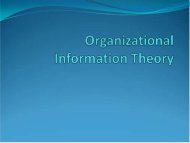Purpose
Purpose
Purpose
You also want an ePaper? Increase the reach of your titles
YUMPU automatically turns print PDFs into web optimized ePapers that Google loves.
Dramatism• Based on the work of Kenneth Burke.• Can be seen as the modern reworking of Aristotle’sRhetoric.• This theory seeks to understand the actions of humanlife as drama.• This understanding arises out of the complex symbolsystems that we use.• This is a very big and bold theory!
Theory at a Glance• Burke’s theory compares life to a play and states that,as a theatrical piece, life requires an actor, a scene, anaction, some means for the action to take place, and apurpose.• The theory allows a rhetorical critic to analyze aspeaker’s motives by identifying and examining theseelements.• Burke believed that guilt is the ultimate motive forspeakers, and Dramatism suggests that rhetors aremost successful when they provide audiences with ameans of purging their guilt.
Assumptions of Dramatism• Humans are animals who use symbols.• We are motivated both by our animal nature(“animality”) and by the symbols we use (“symbolicity”).• Language and symbols for a critically importantsystem for humans.• Language itself molds and limits the kinds of ideas wecan have.• Recall the Sapir-Whorf hypothsis.• Humans are choice makers.• This theory posits that humans have free will.
Dramatic Narratives• Small number of characters• Small number of plots• Small number of solutions• Coherence• Motivational structures• Guilt and redemption – rather than decisions made ingood faith that didn’t work out• Victimage – what are its characteristics? Blaming thevictim?• Scapegoating
The Role of Language• Language is central to this theory.• Language is seen as limiting:• Words can act as “terministic screens,”• “Terministic screens,” lead to “trained incapacities,” aninability to see the underlying reality accurately.• While words have this power, however, humansultimately can exercise choice.
The New Rhetoric• Burke’s work is grounded in Aristotelian rhetoric.• Aristotelian Rhetoric is about persuasion.• The New Rhetoric is about identification.• Things have “substance,” the general nature of the thing.• Persons have substances, the aspects that make themup.• When two persons share some commonality ofsubstance (Irish, Islamic, red-haired, rich, etc.) theyhave identification.• When people don’t share some commonality, this canlead to division.
The New Rhetoric• Perfect identification is impossible, since no twopeople are exactly alike.• But people can move together through a process calledconsubstantiation, appeals made to increase theoverlap between people.• This is a common rhetorical device; e.g. the use of Joethe Plumber in the last election.
Guilty!• Guilt, and the prospect of redemption, arises out ofidentification and division.• Consider the recent “octo-mom” story.• Guilt is “tension, embarrassment, shame, disgust orother unpleasant feeling.”• Guilt is intrinsic to the human condition and we allseek ways to assuage it.
Burke’s Cycle• This leads to Burke’s Cycle:• Order or hierarchy – how society is ordered• The Negative – some, seeing their position in society,seek to reject it.• Privileged people, on the other hand, may feel guilt over theirgood fortune.• Victimage – the way we attempt to purge the guilt.• Mortification• Scapegoating• Redemption – rejection of the unclean and a return toa new order once the guilt has been temporally purged.
The PentadAgentAttitudeActAgency<strong>Purpose</strong>Scene
The Critique• There no question that Kenneth Burke nearly singlehandedlyreinvented the Rhetoric in the 20 th century.• Parsimony• Unclear, obtuse, difficult, confusing and very complex.• At the same time, the domain is the entirety of humancommunication and symbol use.• Scope• Extremely broad and ambitious. This may doom thetheory as it leads into ever more complexity.• Contrast with Uncertainty Reduction, for example.
The Critique• Utility• Had to put this theory to use…• Great for explaining• Hard for predicting• Some have issues with its failure to examine gender,racial and cultural matters.• Burke looked mostly at Western, Christian cultures, so thiscritique has merit.• The reply to that is to simply keep working at it, broadeningthe field of inquiry to cover these matters.
The Critique• Heurism• Theory has been very successful. Once the framework isunderstood, it can be fruitfully applied to all sorts ofissues: technical writing, public relations, public policy,etc.• We could talk about, for example…• The octuplets story• The salmonella peanut scandal• Wall Street “bailout” vs. stimulus “package”• Michael Phelps’s bong story and Kellogg’s.



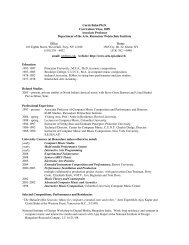
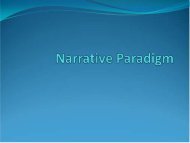

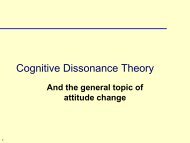
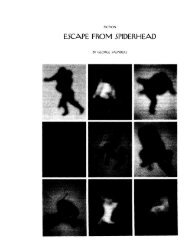
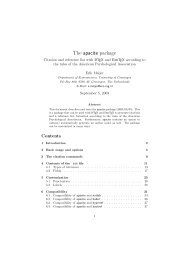
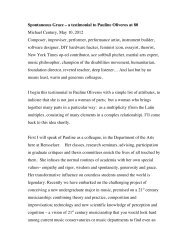
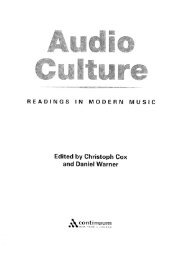
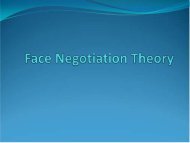

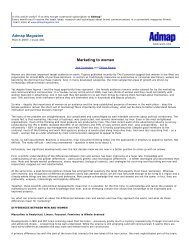
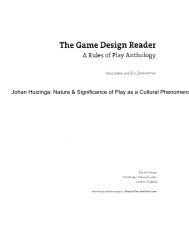
![The Game Design Document [.pdf]](https://img.yumpu.com/30117124/1/190x245/the-game-design-document-pdf.jpg?quality=85)
